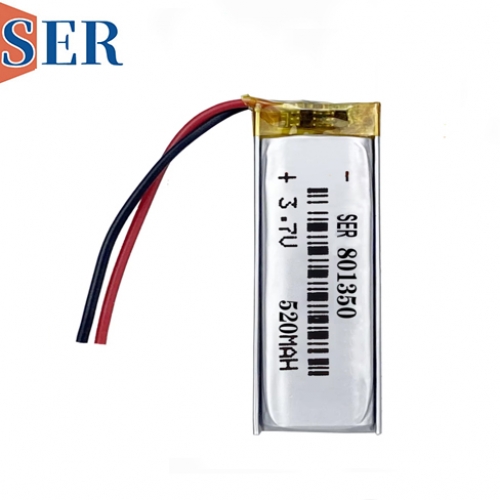What Effect Does Low Temperature Have on Lithium Battery Life?
What Effect Does Low Temperature Have on Lithium Battery Life?
Lithium Batteries are integral components of modern life, powering devices from smartphones and laptops to electric vehicles and even spacecraft. However, the performance and lifespan of lithium batteries can be significantly affected by environmental conditions, particularly temperature. Low temperature is a notable factor that can have a profound impact on battery life. This article aims to explore the effect of low temperature on lithium battery life, delving into the scientific principles behind this phenomenon and discussing its implications for battery usage and performance.
Introduction to Battery Operation and Temperature Dependence
Lithium Batteries operate through electrochemical reactions that convert chemical energy into electrical energy. These reactions involve the movement of ions and electrons within the battery, generating a flow of electricity that powers our devices. The efficiency and speed of these reactions are influenced by a range of factors, including temperature.
 Temperature plays a crucial role in electrochemical reactions. In general, reactions tend to proceed faster at higher temperatures and slower at lower temperatures. This is due to the fact that heat provides energy that can overcome activation barriers, allowing reactions to occur more easily. Conversely, at low temperatures, the reactants have less kinetic energy, leading to slower reaction rates.
Temperature plays a crucial role in electrochemical reactions. In general, reactions tend to proceed faster at higher temperatures and slower at lower temperatures. This is due to the fact that heat provides energy that can overcome activation barriers, allowing reactions to occur more easily. Conversely, at low temperatures, the reactants have less kinetic energy, leading to slower reaction rates.
When it comes to lithium batteries, this temperature dependence has significant implications for battery performance and lifespan. At low temperatures, the electrochemical reactions within the battery slow down, resulting in reduced power output and capacity. This can lead to shorter battery life, slower device performance, and even complete failure in extreme cases.
Effect of Low Temperature on Battery Chemistry
The chemistry of the lithium battery plays a pivotal role in determining its response to low temperature. Different battery chemistries exhibit varying degrees of sensitivity to temperature changes.
Lithium-ion batteries, Lipo battery and LiFePO4 battery, which are widely used in consumer electronics and electric vehicles, are particularly sensitive to low temperatures. The lithium ions within these batteries move more slowly in cold environments, reducing the rate of electrochemical reactions and leading to decreased power output. Additionally, the electrolyte within lithium-ion batteries becomes thicker and less conductive at low temperatures, further impeding ion movement.
LiSOCL2 battery and LiMNO2 battery, CP thin LiMNO2 batteries and nickel-metal hydride (NiMH) batteries are less sensitive to temperature changes than lithium-ion batteries but still suffer from performance degradation at low temperatures. The capacity and power output of these batteries decrease as the temperature drops, although the effect is less pronounced than with lithium-ion batteries.
Ultathin batteries, commonly used in automobiles, are relatively tolerant to low temperatures. However, even these batteries experience a reduction in capacity and charging efficiency when exposed to cold conditions.
Impact on Battery Performance and Capacity
Low temperature has a direct impact on battery performance and capacity. As the temperature decreases, the lithium battery's ability to deliver power diminishes, leading to slower device performance and reduced operating time. This is particularly noticeable in devices that require high power output, such as smartphones and laptops.
Moreover, low temperature can also affect the battery's capacity, or the amount of energy it can store. As the temperature drops, the battery's capacity decreases, meaning it can hold less charge and therefore power the device for a shorter period of time. This reduction in capacity can be significant, particularly in extreme cold conditions.
Challenges for Battery Usage in Cold Environments
The challenges posed by low temperature for battery usage are particularly acute in cold environments. In regions with extreme winter conditions, batteries can quickly lose power and capacity, making it difficult to rely on electronic devices for essential tasks.
For example, in cold climates, smartphones and other portable devices may experience significantly shorter battery life. This can be problematic for users who rely on these devices for communication, navigation, or other critical functions. Similarly, electric vehicles may have limited range in cold weather due to the reduced performance of their batteries.
In addition to the challenges for individual users, low temperature can also affect larger-scale systems that rely on batteries for power. For instance, solar-powered systems or remote sensor networks in cold regions may experience reduced operational time due to decreased battery performance.
Strategies to Mitigate the Effects of Low Temperature
Despite the challenges posed by low temperature, there are several strategies that can be employed to mitigate its effects on battery life.
1. Insulation and Thermal Management
Keeping batteries warm is one of the most effective ways to preserve their performance in cold environments. Using insulated cases or pouches can help protect batteries from direct exposure to cold air and maintain their operating temperature. Additionally, thermal management systems can be employed to actively regulate the temperature of batteries, ensuring they operate within their optimal temperature range.
2. Managing Device Usage
Reducing the power demand on the battery can also help extend its lifespan in cold weather. Avoiding extended periods of heavy usage, turning off unnecessary features and applications, and dimming displays can conserve power





